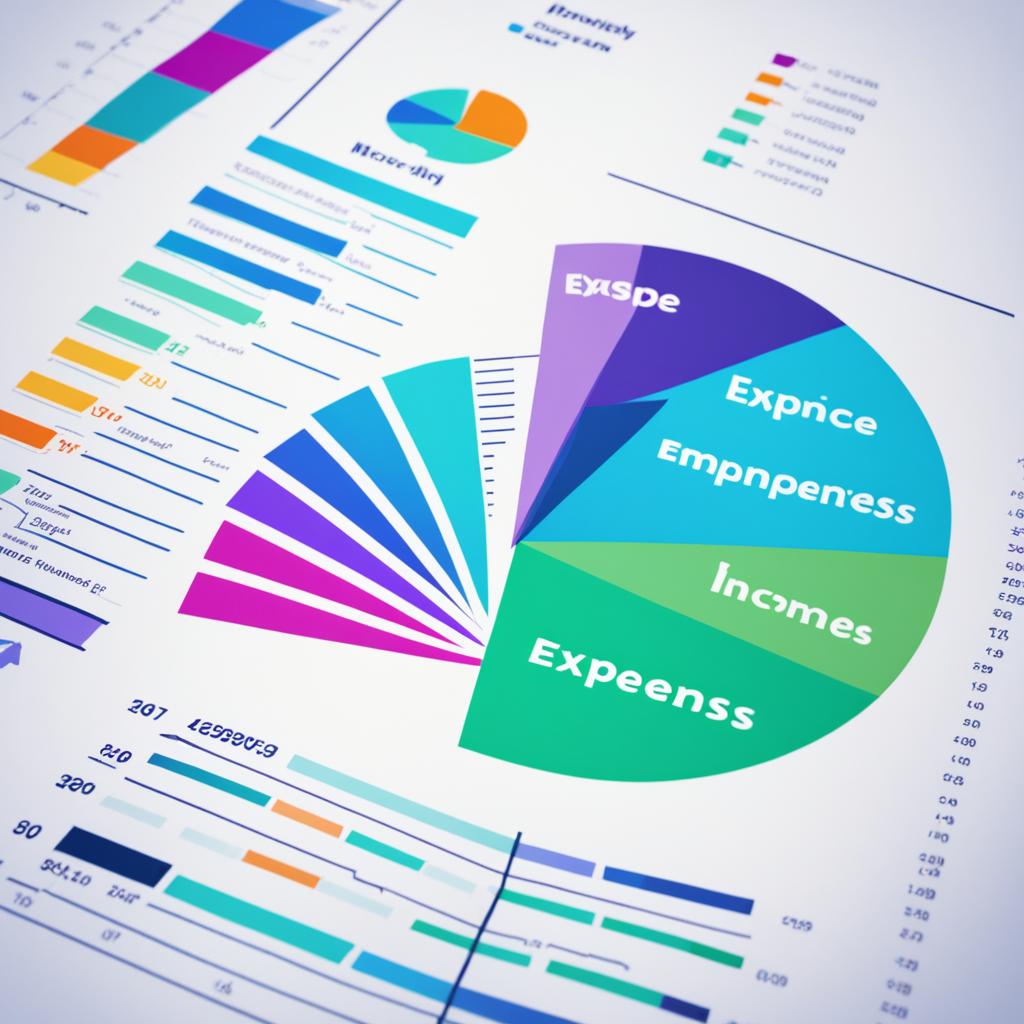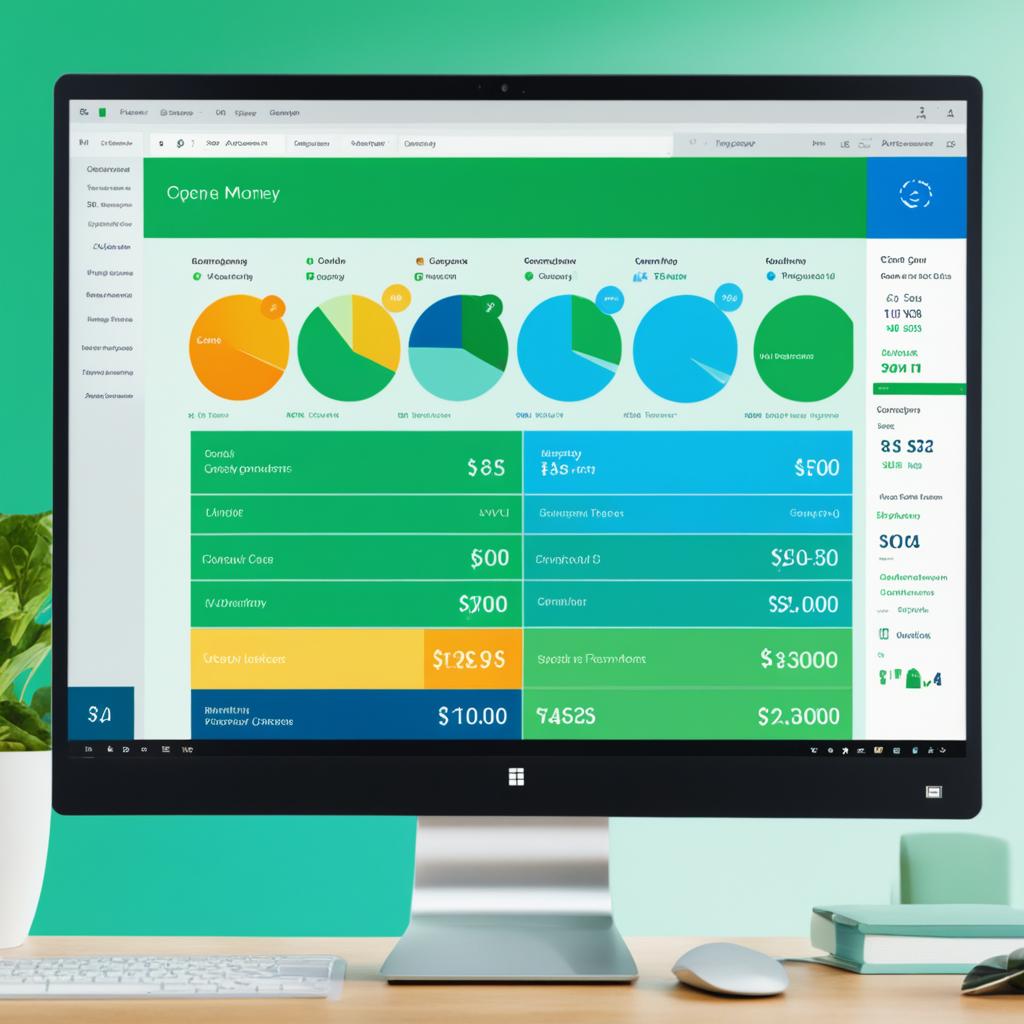Are you looking for a reliable personal finance software to help you stay on top of your financial management? Look no further than Microsoft Money. Developed by Microsoft, this powerful software program offers a wide range of features to assist you in managing your personal finances effectively.
With Microsoft Money, you can easily view your bank account balances, create budgets, track expenses, and more. Whether you’re a household manager or a small business owner, this software provides the tools you need to stay organized and make informed financial decisions.
With its user-friendly interface and intuitive design, Microsoft Money makes it easy for anyone to take control of their finances. Say goodbye to complicated spreadsheets and hours spent reconciling bank statements. Microsoft Money simplifies the personal finance management process, giving you more time to focus on what really matters.
Whether you need to track your income, monitor your expenses, or plan for future financial goals, Microsoft Money has got you covered. Keep all your financial information in one place and gain a comprehensive view of your financial health.
Key Takeaways:
- Microsoft Money is a powerful personal finance software program by Microsoft.
- It offers features such as bank account balance viewing, budget creation, and expense tracking.
- Microsoft Money simplifies personal finance management, helping you make informed financial decisions.
- Stay organized and gain a comprehensive view of your financial health with Microsoft Money.
- Take control of your finances and focus on what really matters with Microsoft Money.
The History of Microsoft Money
Microsoft Money, initially released in 1991 as part of the Microsoft Home series, was developed to compete with Quicken, another popular personal finance management software. Over the years, Microsoft introduced various versions of Money, with the final retail release being Money Plus in 2007.
However, in 2009, Microsoft made the decision to discontinue Money, citing a decline in demand for comprehensive personal finance tools. Despite its discontinuation, Microsoft released Money Plus Sunset in 2010 as a free version without online features or support.
Let’s take a closer look at the evolution of Microsoft Money:
- 1991: Microsoft Money 1.0 was released as part of the Microsoft Home series.
- 2007: Money Plus marks the final retail release of Microsoft Money.
- 2009: Microsoft announces the discontinuation of Money due to declining demand.
- 2010: Money Plus Sunset is released as a free version without online features or support.
“Microsoft Money was developed to compete with Quicken, another popular personal finance management software.”
Despite its discontinuation, Microsoft Money played a significant role in the personal finance management landscape, offering individuals a variety of tools and features to effectively manage their finances. While Microsoft no longer actively supports or updates Money, it still remains a historical milestone in the evolution of personal finance software.
Key Features of Microsoft Money
Microsoft Money offered several key features to help individuals manage their personal finances. Some of these features included:
- Viewing bank account balances
- Creating budgets
- Tracking expenses
- Managing investments
- Generating reports
Money also provided online banking capabilities, allowing users to connect to their financial institutions and download transaction data. With the integration of online banking, users could automatically update their account balances, transfer funds, check bill status, and communicate with their banks through email. Money also offered bill-pay services, including electronic payments through Visa ePay and CheckFree, making it convenient for users to pay bills electronically and avoid overdraft charges.
Localization of Microsoft Money
Microsoft Money, a popular personal finance management software, was widely available in various localized editions for different countries. These editions catered to the specific needs and requirements of users in those regions.
Some of the localized editions of Microsoft Money included:
- United Kingdom Edition
- French Edition
- Japanese Edition
- Canadian Edition
- International English Edition
However, Microsoft stopped updating the U.K., French, and international editions after Money 2005. The last Canadian edition available was Money 2006.
Aside from these editions, Microsoft Money also had versions tailored for other countries like Russia, Brazil, Germany, and Italy. However, due to factors such as an insufficient user base or the cost of localization and support for national online-banking standards, Microsoft discontinued these localized editions.
While the localized editions of Microsoft Money allowed users to manage their personal finances more effectively, the discontinuation of these editions limited their availability and support in respective markets.
Localization of Microsoft Money – Key Points
To summarize the localization of Microsoft Money:
- Localized editions were available for countries like the United Kingdom, France, Japan, Canada, and more.
- Microsoft discontinued updating U.K., French, and international editions after Money 2005.
- The last Canadian edition available was Money 2006.
- Localized editions for countries like Russia, Brazil, Germany, and Italy were also discontinued.
- Discontinuation was due to factors like an insufficient user base or high costs for localization and support.
While users in these regions may no longer have access to the localized editions of Microsoft Money, alternative personal finance management solutions have emerged to fill the gap.
Discontinuation and Replacement of Microsoft Money
After years of providing users with reliable personal finance management software, Microsoft announced the discontinuation of Microsoft Money in 2008. The decision marked the end of an era for this once-popular program.
In 2009, Microsoft released the final version of Money, which was intended to be the last retail release. This signaled the company’s shift away from selling boxed products and towards online downloads as the primary distribution method.
Recognizing the need to support existing users, Microsoft introduced Money Plus Sunset in 2010 as a free replacement for those who relied on Money for managing their finances. However, it’s important to note that Money Plus Sunset lacks the online features and support that users had come to rely on.
| Year | Key Milestone |
|---|---|
| 2008 | Microsoft announces the discontinuation of Money, with the last version planned for 2009 |
| 2009 | Final retail release of Money with boxed versions no longer shipped |
| 2010 | Microsoft discontinues sales of Money and releases Money Plus Sunset as a free replacement |
Despite the absence of ongoing development and updates, Money Plus Sunset continues to serve as a viable option for users who need to access and edit their Money data files without the requirement for online connectivity. It stands as a testament to the lasting impact and value that Microsoft Money brought to individuals seeking to manage their personal finances.
Microsoft Money and Online Banking
One of the standout features of Microsoft Money was its online banking capabilities, which allowed users to connect with their financial institutions and seamlessly manage their finances. With online banking integration, I could effortlessly access and download transaction data from various accounts. This functionality streamlined the process of keeping track of my finances and provided real-time updates of my account balances.
The convenience of online banking didn’t stop there. Microsoft Money also offered features that allowed me to transfer funds securely between accounts, stay informed about bill status, and even communicate with my banks via email. These tools were invaluable in keeping my finances organized and ensuring that I had a clear picture of my financial health at all times.
One of the biggest advantages of using Microsoft Money’s online banking capabilities was the ability to pay bills electronically. With Money’s bill-pay services, such as Visa ePay and CheckFree, I could set up electronic payments and avoid the hassle of writing checks or visiting multiple websites to pay bills. Not only did this save me time and effort, but it also helped me avoid potential overdraft charges by ensuring that bills were paid on time.
Overall, Microsoft Money’s integration with online banking revolutionized the way I managed my finances. It provided a seamless and efficient way to stay on top of my accounts, pay bills, and communicate with my banks. Whether I needed to transfer funds, check my balances, or make timely bill payments, Microsoft Money’s online banking capabilities made managing my finances online a breeze.
Money in Excel and Other Microsoft Finance Solutions
In 2020, Microsoft introduced Money in Excel, a premium template available to Microsoft 365 subscribers. Money in Excel allowed users to manage their finances within Excel, providing budgeting and financial tracking tools. However, this service was withdrawn in 2023.
Money in Excel offered a user-friendly interface and seamless integration with Microsoft Excel, enabling individuals to effectively manage their personal finances. With this premium template, users could easily track income and expenses, create budgets, analyze spending patterns, and set financial goals. The comprehensive features of Money in Excel provided users with valuable insights into their financial health and empowered them to make informed financial decisions.
However, it’s important to note that Money in Excel is no longer available. Although Microsoft 365 subscribers were able to leverage this powerful financial tool for a limited time, the service has been discontinued.
Aside from Money in Excel, Microsoft also released the Money app for Windows Store in 2012. This app served as a news aggregator for personal finance, investing, and real estate, catering to users’ informational needs in the financial realm. However, it is essential to highlight that the Money app is unrelated to the original Microsoft Money software and does not offer the same comprehensive financial management features.
Alternative Finance Solutions from Microsoft
While Money in Excel is no longer available, Microsoft continues to provide other finance solutions to meet the diverse needs of users:
- Excel Templates: Even without Money in Excel, users can still leverage the power of Microsoft Excel by utilizing the various finance templates available. These templates offer pre-designed spreadsheets for budgeting, expense tracking, and financial analysis, helping individuals manage their finances effectively within the familiar Excel environment.
- Microsoft Money Plus Sunset: Released in 2010 as a free replacement for the discontinued Microsoft Money, Money Plus Sunset allows users to open and edit Money data files. Although it lacks online features or support, it remains a viable option for those looking to access their historical financial data.
- Microsoft 365 Features: Microsoft 365 subscribers can take advantage of financial features within other Microsoft applications like Excel, Outlook, and Teams. These applications offer various tools and integrations that can aid in personal finance management, such as budgeting, expense tracking, and collaboration on financial goals.
In conclusion, while Money in Excel has been withdrawn, Microsoft continues to offer alternatives and financial tools that cater to users’ personal finance needs. Whether it’s leveraging the power of Excel templates or utilizing other Microsoft applications, individuals can still find valuable solutions to manage their finances effectively and gain a better understanding of their financial well-being.

Version History of Microsoft Money
Throughout its history, Microsoft released several versions of Money, each introducing new features and improvements. From its initial release in 1991 with Microsoft Money 1.0 for Windows 3.0 to its final retail release of Money Plus in 2007, Microsoft Money evolved to meet the changing needs of personal finance management.
Here is an overview of the major releases of Microsoft Money:
| Version | Release Year | New Features |
|---|---|---|
| Microsoft Money 1.0 | 1991 | Introduced as part of the Microsoft Home series, offering basic personal finance management features. |
| Microsoft Money 2.0 | 1992 | Added support for asset and liability tracking, enhanced report generation, and improved import/export functionalities. |
| Microsoft Money 3.0 | 1993 | Introduced budgeting tools, investment tracking, and improved online banking capabilities. |
| Microsoft Money 4.0 | 1994 | Added support for electronic bill payment, simplified budget creation, and improved portfolio tracking. |
| Microsoft Money 5.0 | 1995 | Enhanced user interface, expanded investment features, and improved reconciliation tools. |
| Microsoft Money 6.0 | 1996 | Introduced online quotes, investing wizards, and tax planning tools. |
| Microsoft Money 7.0 | 1997 | Added online banking integration and introduced the Converter Wizard for Quicken to facilitate transition. |
| Microsoft Money 8.0 | 1998 | Improved online banking security and streamlined user experience. |
| Microsoft Money 9.0 | 1999 | Introduced customizable reports, enhanced investment tracking, and expanded tax planning tools. |
| Microsoft Money 10.0 | 2000 | Enhanced online banking features, investment performance tracking, and advanced tax planning functionalities. |
| Microsoft Money 11.0 | 2001 | Introduced Microsoft Passport authentication, allowing online access to multiple financial institutions. |
| Microsoft Money 12.0 | 2002 | Enhanced online bill payment and improved performance monitoring. |
| Microsoft Money 14.0 | 2004 | Introduced support for Windows Mobile platforms and expanded investment tracking features. |
| Microsoft Money 15.0 | 2005 | Improved security features, extended online banking support, and additional customization options. |
| Microsoft Money 16.0 | 2007 | Added integration with online services, including bill payments and investment quotes, for a seamless financial management experience. |
The final version of Microsoft Money, Money Plus Sunset, was released in 2010 as a free replacement. Although Microsoft discontinued the active development and support for Microsoft Money, it remains a significant part of personal finance software history.
Stay tuned for the next section, where I’ll discuss the benefits of using Microsoft Money for personal finance management.
Benefits of Microsoft Money for Personal Finance
Microsoft Money offers a range of advantages for individuals seeking effective personal finance management. With its comprehensive features and user-friendly interface, users can experience the following benefits:
1. Comprehensive Financial Overview
Microsoft Money provides users with a holistic view of their financial health. By seamlessly integrating bank account balances, expense tracking, and budget creation tools, users can gain valuable insights into their financial well-being.
2. Expense Tracking and Budgeting
Tracking expenses is crucial for maintaining a healthy financial lifestyle. Microsoft Money allows users to easily monitor their spending habits and allocate budgets for different expenditure categories. By establishing accurate budgets and tracking progress, users can optimize their finances and achieve their financial goals.
3. Efficient Investment Management
For those looking to manage their investments effectively, Microsoft Money offers a robust set of tools. Users can track investment portfolios, monitor market trends, and evaluate performance metrics. This empowers users to make informed investment decisions and maximize their returns.
4. Seamless Online Banking Integration
Microsoft Money streamlines the management of multiple bank accounts by integrating online banking capabilities. Users can effortlessly connect to their financial institutions, view updated account balances, and download transaction data. This integration eliminates manual data entry and ensures accurate financial records.
5. Convenient Bill-Pay Services
With Microsoft Money, users can simplify their bill payments through online bill-pay services. The software enables electronic payments and helps users avoid late fees and overdraft charges. By centralizing bill payments in one platform, users can easily manage their financial obligations.
6. Reporting and Analysis Tools
Microsoft Money offers robust reporting and analysis tools, empowering users to gain in-depth insights into their financial behavior. From customizable reports to interactive charts, users can track trends, identify patterns, and make data-driven decisions. This analytical capability enhances financial planning and drives long-term financial success.
By leveraging the benefits of Microsoft Money, individuals can effectively manage their personal finances, optimize their financial health, and achieve their financial goals.
| Benefits | Description |
|---|---|
| Comprehensive Financial Overview | Get a holistic view of your financial health. |
| Expense Tracking and Budgeting | Easily track expenses and establish accurate budgets. |
| Efficient Investment Management | Track and manage investment portfolios with precision. |
| Seamless Online Banking Integration | Integrate multiple bank accounts and automate transactions. |
| Convenient Bill-Pay Services | Simplify bill payments and avoid late fees. |
| Reporting and Analysis Tools | Utilize data-driven insights for informed financial decisions. |

User Feedback and Transitioning from Quicken
Users of Microsoft Money have provided positive feedback on the software’s capabilities, particularly its online banking features and ease of use. Many individuals who previously used Quicken made the switch to Microsoft Money, citing its superior online banking components and overall functionality.
“I switched from Quicken to Microsoft Money and have been extremely satisfied with the transition. The online banking features in Money are far more seamless and convenient.” – Sarah Thompson
“Microsoft Money has made managing my finances a breeze. The user-friendly interface and intuitive design are a major improvement over Quicken.” – James Carter
To facilitate the transition from Quicken to Microsoft Money, Microsoft introduced the Converter Wizard for Quicken in Money 97. This feature allows users to seamlessly convert their Quicken data into Money, ensuring a smooth transfer of financial information. Additionally, guided tours and tailored Quicken Help were provided to assist users in making the switch.
| Feedback from Users | Transition Assistance |
|---|---|
|
|
Pricing and Availability of Microsoft Money
When it came to purchasing Microsoft Money, retail stores offered various editions of the software at different price points. For instance, the standard edition of Money 97 had a price tag of approximately $34.95 (U.S.) after a rebate. Moreover, localized versions of Money were available in different languages, catering to diverse users across the globe.
For those who wanted to try before they buy, Microsoft also provided a trial version of Money for free download from their official website. This allowed users to test out the software’s capabilities and determine if it met their personal finance needs.
However, with the discontinuation of Microsoft Money, it is no longer available for purchase or download. While users can no longer acquire the software, there are alternative solutions and online personal finance tools available in today’s market to help individuals manage their finances effectively.
- Quicken: A popular choice among users for managing personal finances and budgeting.
- Mint: An online platform that allows users to track their spending, create budgets, and manage their financial accounts.
- YNAB (You Need A Budget): A budgeting app that helps users gain control of their finances and prioritize their spending.
- Personal Capital: A comprehensive financial management platform that offers tools for budgeting, investment tracking, and retirement planning.
While Microsoft Money may no longer be available, these alternatives provide a wide range of features and capabilities to help individuals take control of their finances and achieve their financial goals.
Conclusion
Microsoft Money was a popular personal finance management software program developed by Microsoft. With its range of features such as online banking, bill-pay services, and budgeting tools, Money provided individuals with effective tools to manage their finances. However, Microsoft discontinued Money in 2010, and the last version released was Money Plus Sunset, which serves as a free replacement but lacks ongoing support and updates.
Despite its discontinuation, Microsoft Money still remains a viable option for users who need to open and edit Money data files. While alternative solutions and online personal finance tools have emerged to fill the gap left by Microsoft Money, there is still value in utilizing Money for its comprehensive capabilities and ease of use.
The decision by Microsoft to discontinue Money may have been influenced by the changing landscape of personal finance tools and the emergence of online platforms. As technology advances, users now have access to a wide range of financial management tools and applications that provide similar functionalities to Microsoft Money.
In conclusion, Microsoft Money was a pioneer in personal finance management software. Despite its discontinuation, it will always be remembered for its innovative features and its contribution to helping individuals manage their finances effectively. As the financial technology sector continues to evolve, users can explore alternative solutions to meet their personal finance needs.
FAQ
What is Microsoft Money?
When was Microsoft Money released?
Why was Microsoft Money discontinued?
Is Microsoft Money still available for download?
What are the key features of Microsoft Money?
Did Microsoft Money have localized editions for different countries?
What is Money in Excel?
How much did Microsoft Money cost?
What are the benefits of using Microsoft Money for personal finance management?
Can I transition my data from Quicken to Microsoft Money?
Is Microsoft Money still supported?
What are the alternatives to Microsoft Money?
Source Links
- https://en.wikipedia.org/wiki/Microsoft_Money
- https://news.microsoft.com/1996/09/30/microsoft-announces-money-97-making-managing-personal-finances-even-easier/
- https://news.microsoft.com/2001/08/21/10th-anniversary-edition-of-microsoft-money-taps-webs-power-to-deliver-unprecedented-automation-to-personal-finance-management/
Money posts:
 Personal Finance Software: Top Picks (2024)
Personal Finance Software: Top Picks (2024)
 9 Best Mobile Banking Apps for 2024 – Manage Your Money on the Go
9 Best Mobile Banking Apps for 2024 – Manage Your Money on the Go
 22 Best Quicken Alternatives for | Free & Paid (2024)
22 Best Quicken Alternatives for | Free & Paid (2024)
 Simplifi Review by Quicken | A Simple Way To Track Your Finances in 2024
Simplifi Review by Quicken | A Simple Way To Track Your Finances in 2024
 Axos Bank Review | Millennial Money (2024)
Axos Bank Review | Millennial Money (2024)
 Best Online Banks of 2024
Best Online Banks of 2024
 12 Best Portfolio Analyzers (2024)
12 Best Portfolio Analyzers (2024)
 Best Tax Software: File with Confidence (2024)
Best Tax Software: File with Confidence (2024)

